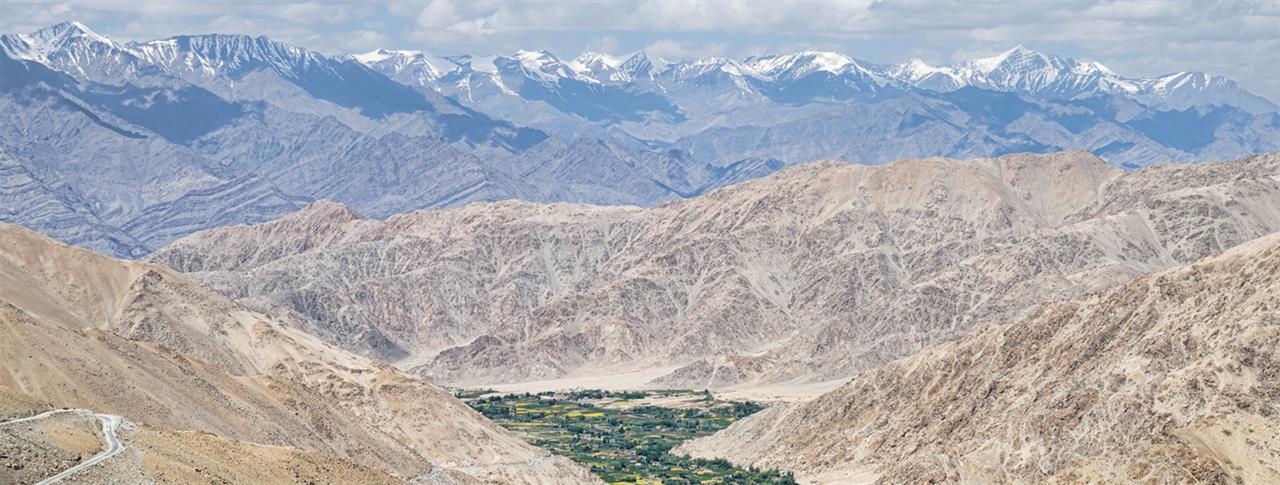

The Union Territory of Ladakh is a cold desert and the highest plateau of India. Its history can be traced back to the Neolithic era, and appears in the early historic accounts of Herodotus and Ptolemy.
The region hosts ancient trade routes from as far west as Damascus to the far-east reaches of Guangzhou, also connecting the Northern Caspian Sea to Sri Lanka and Vietnam. Its unique geographic location and historic celebration of diversity of culture makes it one of the earliest examples of an international hub. Initially part of the Kushan empire in the first century CE, Buddhism spread through the region via the ancient trade routes. To this day, Ladakh is the guardian of ancient artworks with Buddhist subjects depicted in Roman-Greco style with Byzantine influences.
Ladakh has hosted great masters, meditators, seekers and explorers. The monumental mountainous terrain coupled with its deep spiritual history makes it one of the most profound regions for reflection, retreat and spiritual quests. Ladakh was an independent dynasty in 842 CE, where its culture and traditions flourished. This Ladakhi dynasty, Nyima-Gon, spearheaded the “Second Spreading of Buddhism,” drawing masters from north-west India, and claiming its place in history as one of the most sacred lands in Central Asia. In subsequent centuries, Ladakhi kings extended the territory to the realm of Purang and Mustang (present-day Nepal). King Sengge Namgyal (1616-1642), the “Lion King” of the Namgyal dynasty endeavoured to reinstate Ladakh to its former glory by restoring several religious establishments. The Namgyal dynasty was then overthrown by the Mughal empire, following a Sikh rule. After 1947, disputes between Pakistan and China transformed accessibility to Ladakh. Restrictions on civilian traffic on the Srinagar-Leh route were eventually lifted in 1974, and Ladakh became open to tourists, paving the way for an influx of global influences.
Strategically located in northwest India, bordering Pakistan and China, Ladakh is home to several ethno-linguistic groups with diverse cultures and lifestyles. Given its unique geographical and developmental factors, Ladakh has witnessed major societal and cultural changes over the past few decades. While the scale and quality of education has remained low, agricultural activities, which were a primary source of livelihood, have also taken a backseat. Local private sector jobs are mainly centered around tourism, hospitality and other services related to the same. As a result, an increasing number of locals migrate to towns outside Ladakh to explore employment opportunities, leading to a regional brain drain. With this increasing gap between knowledge and skills, unemployment has become the biggest challenge for Ladakh.
Several isolated regions across the Himalayas and the world face similar challenges arising from inaccessibility, lack of training and education, and a stagnant local economy. There is an urgent need to not only retain local talent, but also develop entrepreneurial skills that can help foster a robust socio-economic environment in Ladakh and the surrounding regions. Additionally, there is also a need to educate the younger generation regarding the importance of maintaining Ladakh’s distinctive culture and heritage, along with that of the Himalayas.
Apply Now Recommend A Fellow Get in Touch